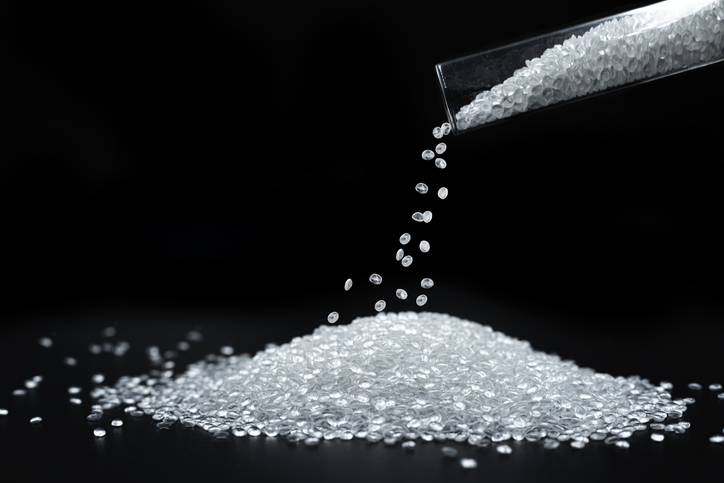High-performance polymers offer unique properties that make them well-suited for demanding applications across industries like aerospace, automotive, electronics, and medical devices. Compared to general industrial polymers or engineering resins, high-performance polymers are better able to withstand extreme conditions, exhibit enhanced mechanical strengths, and resist wear and corrosion. When leveraged effectively, high-performance polymers in manufacturing are exceptional materials that can optimize end-product quality.
What factors come into play when looking to get the most out of high-performance polymers? These materials represent the highest grade of polymers used in plastics manufacturing and often require specialized skills, experience, and machinery in order to make best use of them as replacements for other materials (like glass and metal). It makes sense then for manufacturers to explore every avenue possible to maximize their effectiveness in producing the highest quality parts.
Let’s get started.
A Guide to the Full Benefits of High-Performance Polymers in Manufacturing
The superior attributes of high-performance polymers translate into performance benefits for manufactured components. Let’s quickly review these advantages:
- Enhanced mechanical properties — High-performance polymers exhibit remarkable strength and durability, enabling the production of robust and durable components.
- Improved chemical resistance — These polymers resist chemical corrosion, making them ideal for applications in harsh environments.
- Heat and flame resistance — High-temperature stability ensures part integrity even under extreme heat (greater than 300℉), a critical feature in demanding industries.
- Low friction and wear — Reduced friction prolongs the lifespan of components, ensuring efficiency and minimal maintenance.
- Electrical insulation properties — High dielectric strength and insulation properties make these polymers indispensable in electrical applications.
How Manufacturers Select the Right High-Performance Polymers
High-performance polymers offer extraordinary characteristics, but not every specific material will be suitable for every application. The first step toward optimizing production when using these types of polymers — whether it’s PEEK, Torlon® (PAI), or any other high-performance option — is to identify which is best suited for the task at hand.
Many criteria are evaluated when manufacturers and their engineering teams seek out the perfect fit between material and task and weigh factors such as material compatibility, cost considerations, regulatory and safety standards, longevity and durability, and application-specific requirements.
For example, confirming chemical compatibility ensures the polymer withstands operating substances without losing integrity. Cost analysis weighs performance value versus higher resin expenses. Regulatory and safety standards must be met, especially in heavily-regulated industries like the medical sector. Longevity factors in determining a part’s lifetime under expected stresses. The optimal polymer varies based on electrical, mechanical, thermal, and other technical needs.
Design Considerations
Effective design is vital for obtaining full value from high-performance polymer parts and optimizing their performance. Design for Manufacturing is paramount for any plastic parts manufacturer and adhering to those principles is especially important when working with costlier materials as the cost of failure or inefficiency is compounded. Here’s a look at some of the many design considerations when using high-performance polymers.
- Material Flow and Mold/Tooling Design — Proper mold and tooling design facilitate seamless material flow, ensuring accurate component formation.
- Dimensional Stability — High-performance polymers maintain their dimensions, critical for applications requiring precision and consistency.
- Complex Geometries — These polymers can be molded into intricate shapes, allowing for innovative designs and versatile applications.
- Surface Finish and Aesthetics — Polymers can achieve diverse surface finishes, catering to both functional and aesthetic requirements.
- Tolerances and Fit — Precision in tolerances ensures parts fit seamlessly, reducing assembly challenges and ensuring optimal functionality.
Manufacturing Techniques
When working with high-end materials, proven experience is necessary. Many of the highest-performance polymers require specialized attention to key details to unlock the best of what they have to offer. Not every plastic manufacturing partner will have the expertise to maximize the enhanced characteristics in these materials.
The techniques used for manufacturing high-performance polymers fall into two distinct categories:
Injection molding is commonly used to manufacture parts with complex shapes, closer tolerances, and shorter cycle times versus other processes.
CNC machining allows modifying of molded blanks for specialized features or higher precision. This process is ideal for intricate parts with high accuracy, prototyping and low-volume production.
Rely on the Experts in High-Performance Polymers in Manufacturing
At Ensinger Precision Components, we integrate cutting-edge advanced manufacturing equipment and technologies to deliver the capabilities needed for the production of high-performing plastic parts. With a deep knowledge and insight into injection molding high-performance materials and engineering principles, we optimize the manufacturing process to ensure a high-level of product quality and a streamlined time to market for our customers.
Are you looking to partner with a plastics manufacturing expert that specializes in using high-performance polymers in manufacturing? Connect with our team today to get started.
